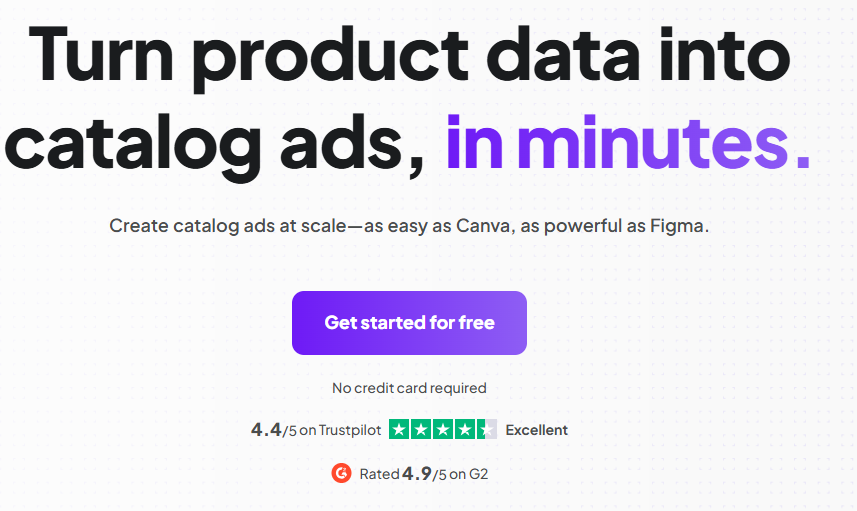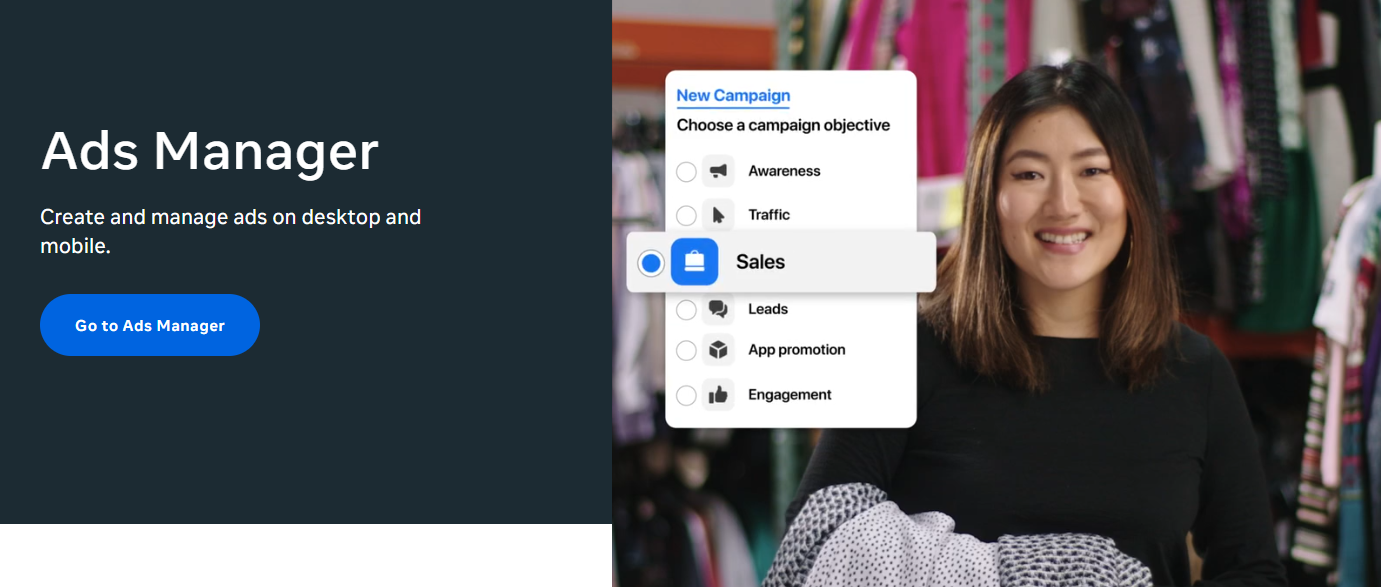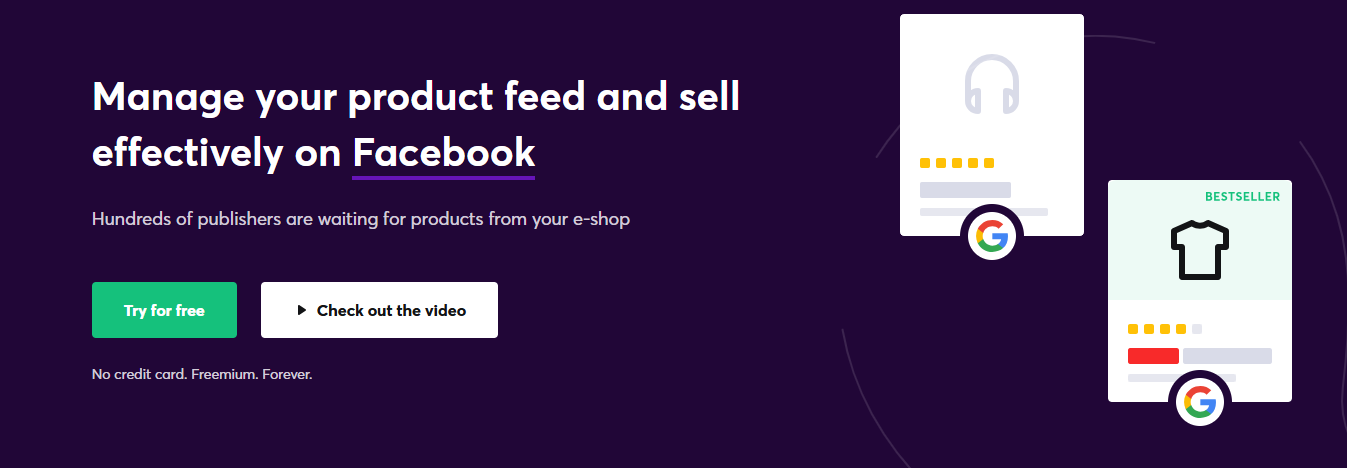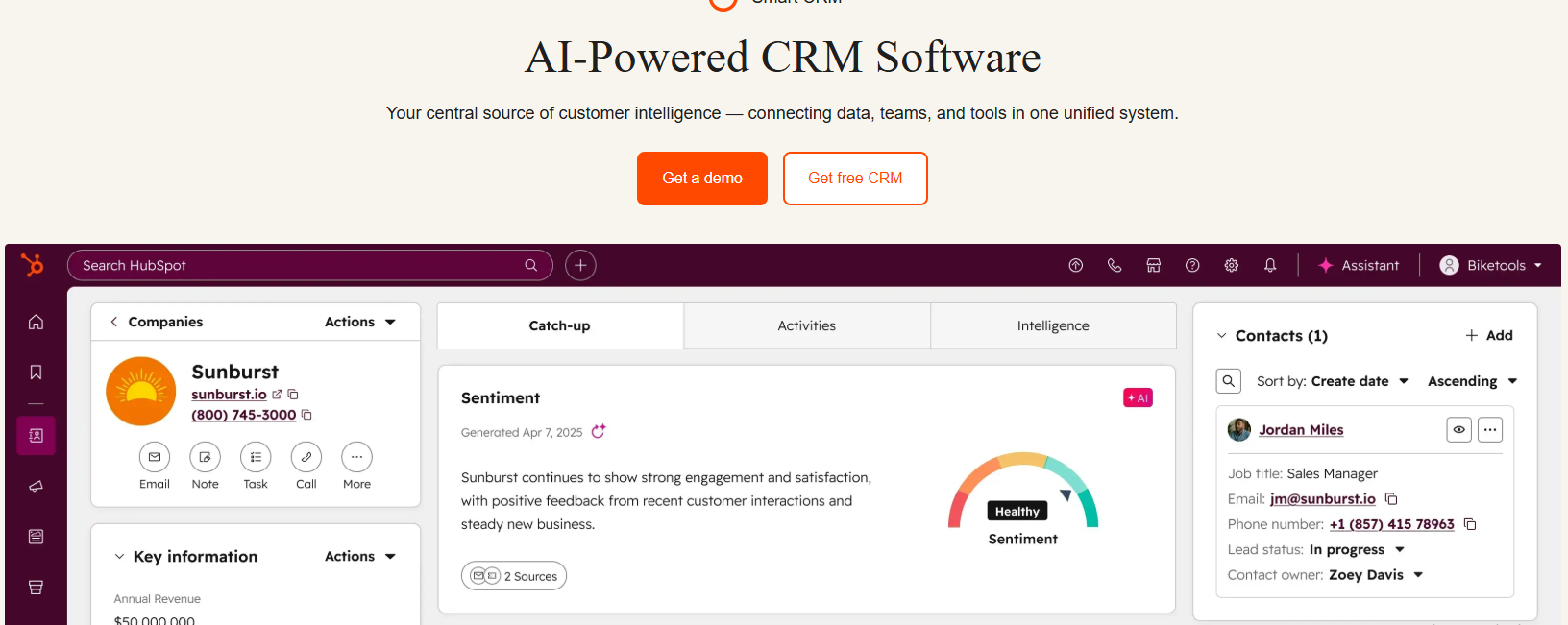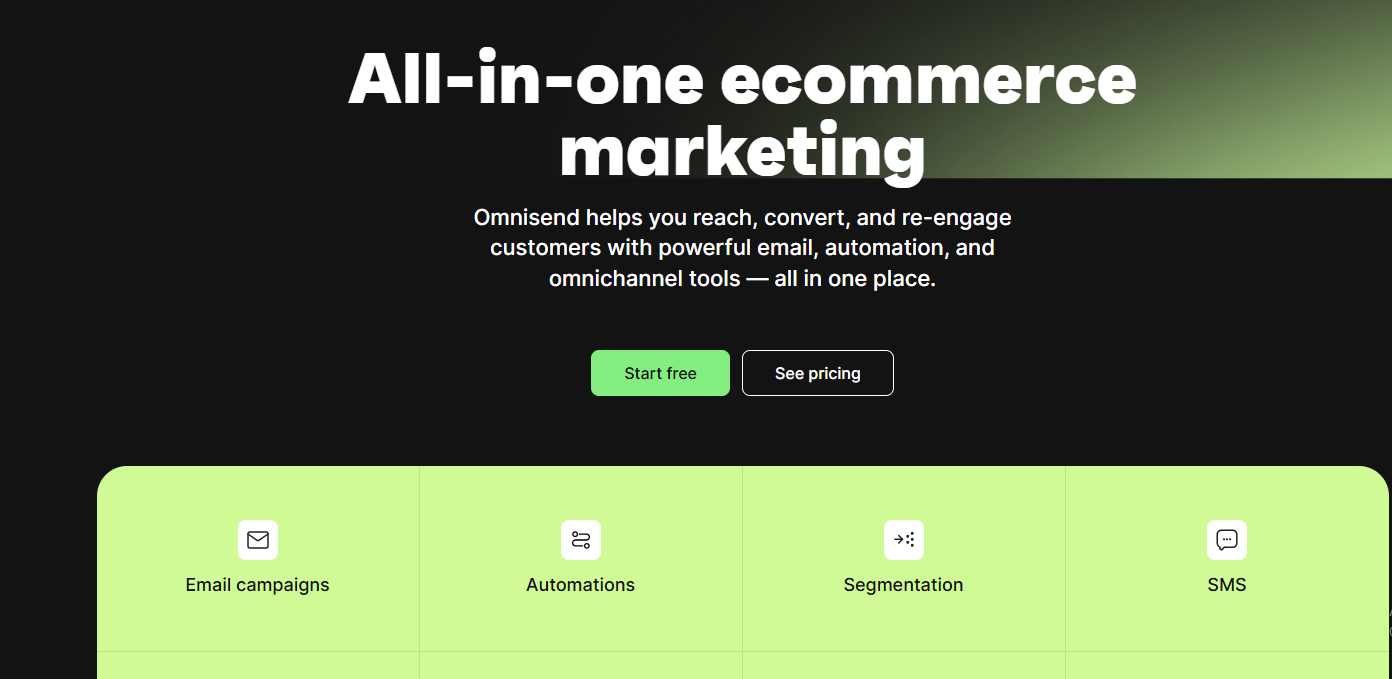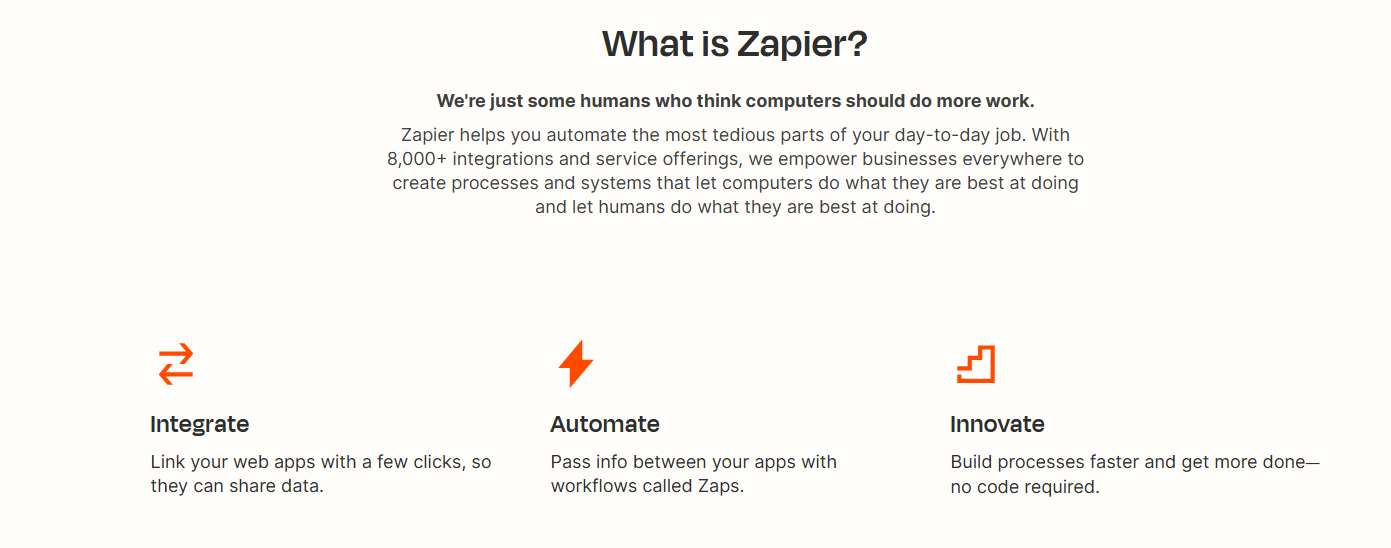7 Best Ecommerce Agency Software to Automate and Scale Your Business
This guide covers 7 essential ecommerce agency tools that automate ad creation, sync data across platforms, and streamline client management. You'll learn what each tool does, how much it costs, and which workflows it's best suited for.


Can you imagine how much time you'd spend managing eCommerce clients without technology? It would be excruciatingly mentally taxing and time-consuming.
That's why we've compiled 7 insanely helpful eCommerce agency software you can use to automate ad creation, sync data between platforms, track attribution, and manage client relationships.
Each tool review includes pricing, key features, and the specific scenarios where it delivers the most value.
Best eCommerce software for agencies
| Tool | Price | G2 Rating | Best feature |
|---|---|---|---|
| Cropink | Free plan; $39/month | ⭐⭐⭐⭐⭐ 5.0 | Template-based system generates thousands of on-brand catalog ads |
| Meta Ads Manager | Free | N/A | Advanced audience targeting with machine learning optimization |
| Feedink | Free plan | ⭐⭐⭐⭐ 4.9 | 100+ rules to automatically customize feeds for any marketplace |
| HubSpot | $1,300/month | ⭐⭐⭐⭐ 4.4 | Unified CRM that centralizes all client interactions |
| Omnisend | $16/month | ⭐⭐⭐⭐ 4.6 | Pre-built automation workflows for cart recovery and follow-ups |
| Zapier | $19.99/month | ⭐⭐⭐⭐ 4.5 | Connects 6,000+ apps without coding |
| Triple Whale | $149/month | ⭐⭐⭐⭐ 4.5 | Multi-model attribution tracking for accurate ROI |
1. Cropink
No catalog campaign is complete without compelling imagery.
However, if you've been in eCommerce for any length of time, you know how time-consuming it is to scale ad creatives manually when you have a catalog with 100+ products that all deserve a spot in your ad strategy.
That’s something you’ll no longer have to worry about if you implement Cropink.
Cropink is a creative automation platform for catalog ads.
How does it work?
Cropink connects directly to your product feeds and automatically pulls product information, including images and prices, into ad creatives.
You can use ready-made templates or design your own from scratch in Figma, then connect directly to Cropink to replicate them across all your products. This template-based system lets you generate thousands of ads while maintaining consistent brand colors and fonts.
With Cropink, you can have platform-ready ads for channels like Meta, TikTok, and Snapchat in just a few minutes.
Key features
- Automatically pulls product data such as images, price, and name from feeds into ad creatives.
- Template-based system to generate thousands of on-brand DPAs at scale.
- Outputs platform-ready catalog ads for Facebook, Instagram, TikTok, and Snapchat.
- Provides ready-made templates, Figma integration, and rule-based design management.
- Features for campaign scheduling and automatic product feed updates
- Allows multiple projects and teams under one account
Pricing
- Free plan for up to 25 products
- Paid plan starts at $39/month for up to 100 products
- Easy to use thanks to the intuitive interface
- You can enforce brand consistency across all dynamic ads
- Supportive and helpful team
- Automatically handles product updates so your ads are always relevant
- Limited to catalog ads, so it won't cover all your creative needs for a full-funnel strategy.
- Doesn’t cover product-level videos yet
Best use case
Cropink is best for eCommerce agencies and brands that require fast creation and testing of high volumes of on-brand catalog ads across multiple platforms.
2. Meta Ads Manager
Meta Ads Manager is the most comprehensive platform for managing ad campaigns across Facebook, Instagram, Messenger, and Audience Network.
On this platform, you’ll find all the tools you need to create, manage, and track your ads.
The feature that we’ve found most useful in Meta Ads Manager is its advanced targeting capabilities, since you can segment your audiences based on demographics, interests, and behaviors.
As an eCommerce agency, you'll love Meta’s Dynamic Product Ads (DPA) and machine learning features like Advantage+ campaigns. These two features will be essential for automated campaign optimization and showing relevant products to users.
Meta Ads Manager also supports role-based access and multi-account management. This way, your agency is able to collaborate with team members and clients while maintaining control over campaign permissions.
Key features
- All-in-one platform for creating, managing, and tracking ads across Meta properties.
- Granular audience segmentation based on demographics, interests, and custom/lookalike audiences.
- Machine learning to automate campaign creation, bidding, and placement.
- Robust, in-platform analytics to measure performance against marketing goals.
- A/B testing and experimentation tools to optimize creatives and audiences
- Integrates with most eCommerce platforms to sync product catalogs
- Multi-account and role-based access for agency collaboration
- Flexible daily or lifetime budget control, automated bid strategies, and performance alerts.
Pricing
- Free to use as long as you have a Facebook business account
- Access to billions of users
- Best-in-class ad targeting with precise audience segmentation
- Machine learning optimization features to simplify campaign setup and improve performance over time.
- Complex learning curve
- Poor customer support
- Risk of ad account bans with little warning
- Post-iOS privacy changes, data reliability, and attribution accuracy have been a frequent source of frustration.
Best use case
Meta Ads Manager is essential for any eCommerce agency running high-volume ad campaigns, especially if you're using dynamic product ads and retargeting.
3. Feedink
Feedink helps eCommerce businesses manage and optimize their product data feeds before distributing them to marketing channels and marketplaces.
The platform supports importing data from multiple sources and lets you combine them into a single, optimized feed.
Feedink’s most powerful feature is the rule-based data management system. With over a hundred rules at your disposal, you can filter, modify, and tailor your product data for specific publishers.
Feedink ensures your feed meets the exact specifications of hundreds of marketplaces and comparison sites, so you don't waste time manually reformatting data or dealing with rejected feeds.
Key features
- Supports data importation from XML, CSV, JSON, API, and also combining multiple data sources.
- Over a hundred rules to filter, modify, and tailor product data for export.
- Can optimize product feeds for hundreds of marketing channels without much manual input.
- Integrates with Google Analytics so you can optimize your product feeds based on campaign data.
Pricing
- Free for up to 100 products and one export channel
- Rule-based system provides granular control and flexible customization of product data.
- Export to hundreds of publishers and marketplaces without compatibility issues.
- Multiple import formats support diverse eCommerce setups and data sources.
- Automation features keep feeds updated in real time for growing catalogs.
- Built-in validation prevents errors and ensures accurate data across channels.
- A relatively steep learning process due to the number of rules and customization options.
Best use case
Feedink is best for eCommerce businesses that distribute their catalog to multiple channels, such as Google Shopping, Amazon, and comparison sites. If each platform has different data requirements and you need control over how your product data appears across channels, Feedink's rule engine is able to handle the customization automatically.
4. HubSpot
Every agency, for the sake of sanity, must have a way to handle clients and communication from a single platform. HubSpot is the best-in-class solution for these customer relationship management needs.
The platform is more of an integrated CRM that centralizes all client and prospect interactions. However, should you choose to buy the add-ons, you can handle some aspects of sales and marketing with HubSpot.
For agencies, using HubSpot means you can track every client touchpoint in one place. You can finally say goodbye to moving between tools to see where a client is in the pipeline or what conversations your team has had with them.
Key features
- Central database for all client and prospect interactions.
- Features for email marketing, landing pages, social media, and SEO.
- Live chat and ticketing system for client support
- Reporting dashboards to track campaign performance and client metrics
- Team collaboration tools and task assignments
Pricing
- HubSpot has a free version of its CRM and basic tools across all Hubs
- Agency plans start at $1,300 per month
- Seamless integration between CRM, marketing, sales, and service tools.
- Generally praised for its clean, intuitive interface and ease of use.
- Highly functional free version that outshines many competitors' paid CRMs.
- Well-suited structure for agencies managing multiple client accounts.
- Price increases dramatically as your contact list grows.
- Users often feel they are paying for tools they don't use.
Best use case
HubSpot is best for eCommerce agencies that want all their client data, communications, and workflows in one place instead of scattered across multiple tools.
5. Omnisend
Omnisend is an email marketing automation platform for eCommerce brands that want to handle email and SMS marketing in one platform.
This platform comes with pre-built automation workflows for critical eCommerce scenarios like abandoned cart recovery, welcome series, and post-purchase follow-ups. You can also customize these templates to match your brand tone, colors, etc.
Like any good eCommerce platform, Omnisend is able to handle customer segmentation so you can target customers based on their shopping behavior and history of purchase.
Omnisend's interface is intuitive and easy to set up. Most users get up and running within 30 minutes.
Key features
- Combines email, SMS, and push notifications in one platform.
- Pre-built workflows for abandoned cart, welcome series, and post-purchase.
- Tools for creating pop-ups, sign-up forms, and landing pages.
- Integrate product reviews into your email and SMS campaigns
- 160+ integrations with other marketing and organization eCommerce agency software
Pricing
- Free limited plan
- Paid plans start at $16 per month
- Seamless integrations with platforms like Shopify and BigCommerce.
- It’s made with eCommerce businesses in mind
- Provides more features than competitors at the entry and mid-level tiers.
- Easy to get started with since it comes with pre-built templates and automation.
- Highly praised for responsive, patient, and high-quality 24/7 support.
- Less granular and complex segmentation compared to some competitors (e.g., Klaviyo)
- Some customer feedback mentions occasional glitches
Best use case
Omnisend is best for small to medium-sized ecommerce businesses and agencies that want email and SMS marketing in one platform without the enterprise price tag or complexity.
6. Zapier
As an eCommerce agency, you're probably handling multiple platforms that don't integrate natively. Zapier fixes that. It connects over 6,000 apps and lets you build automated workflows without writing any code.
Zapier allows you to set up Zaps based on simple trigger and action logic.
For example, when a new lead fills out a form on your site, Zapier can automatically add them to HubSpot, send a Slack notification to your team, and create a task in your project management tool.
For agencies, this means you can sync lead data between platforms, automate campaign reporting, update creative assets across tools, and eliminate the manual data entry that eats up billable hours.
Key features
- Connects over 6,000 apps across multiple industries
- Multi-step workflows with conditional logic
- Pre-built templates for common automation tasks
- Real-time syncing between platforms
- Error monitoring and automatic retry for failed tasks
- Supports webhooks for connecting to custom or non-native apps.
Pricing
- Offers a limited free plan
- Paid plans start at £15.26 ($19.99) per month
- An Intuitive, no-code interface that’s accessible
- Offers the largest number of supported apps in the market.
- Highly effective at automating repetitive, manual tasks.
- Per-task pricing becomes very expensive for high-volume operations.
- Less flexible than code-based solutions for complex data manipulation.
- Changes or removes features unexpectedly
Best use case
Zapier is best for eCommerce agencies coordinating multiple tools that don't integrate natively. If you need to automate workflows like lead management, client notifications, or data syncing between platforms without hiring a developer, Zapier handles it.
7. Triple Whale
Triple Whale solves one of the biggest headaches for eCommerce agencies: figuring out which marketing channels bring sales.
The platform pulls data from all your sources, like Shopify, Meta, Google, and TikTok, into one real-time dashboard.
What your agency will appreciate most is Triple Whale's attribution modeling. It shows you which touchpoints actually lead to conversions, so you can calculate true marketing efficiency and stop wasting budget on channels that look good but don't convert.
You can also see which specific ad creatives perform best and analyze customer lifetime value by cohort.
Key features
- Aggregates data from all eCommerce and ad platforms into one dashboard.
- Multiple models (First Click, Last Click, Weighted) for accurate conversion tracking.
- Insights into which ad creatives are giving you the best performance.
- Proprietary tracking pixel for transparent ad performance reporting.
Pricing
- Free limited plan
- Agency plans start at $149 per month
- Easy setup and integration with major platforms
- Advanced attribution and analytics features
- Reliable customer support and onboarding
- High price for smaller businesses
- Some data lag; not always real-time
- Limited support for non-Shopify channels
- Learning curve for attribution logic
Best use case
Best for agencies struggling to understand which marketing channels actually drive sales. If you're tired of logging into multiple platforms to piece together performance data or can't confidently tell clients where their budget is working, Triple Whale's unified dashboard and attribution modeling will give you concrete answers.
Tips to choose the best eCommerce agency software
- Prioritize integration over features. Before committing to any software, verify it integrates with the platforms you already use, especially your eCommerce store, Meta, Google Ads, and your CRM.
- Calculate the time-to-value ratio. Always consider how long it will take until your team is productive with a certain tool. It’s best to look for platforms that deliver value within weeks, not months.
- Test scalability against your growth plans. An affordable starter plan can look great until you hit its limits and pricing jumps 300%. To avoid this, check pricing tiers and map out how costs scale as you add clients, products, or automation tasks.
- Evaluate support quality. 24/7 support can sound impressive, but if it's just a chatbot, you’ll be frustrated with that software. Check reviews about customer support responsiveness and expertise.
Summary and recommendation
These are the use cases we recommend for each of the following eCommerce agency software.
- Cropink – Best for agencies with large product catalogs that need to create thousands of on-brand catalog ads quickly.
- Meta Ads Manager – Best for running high-volume ad campaigns with dynamic product ads and retargeting.
- Feedink – Best for businesses distributing product catalogs to multiple channels with different feed structure requirements.
- HubSpot – Best for agencies managing multiple clients who need all client data and workflows in one platform.
- Omnisend – Best for small to medium-sized agencies wanting email and SMS marketing without enterprise complexity.
- Zapier – Best for agencies coordinating multiple tools that need automation without hiring developers.
- Triple Whale – Best for agencies that need accurate attribution tracking and unified analytics across all marketing channels.
Stop spending hours manually designing DPAs or worrying about brand consistency across hundreds of product ads.
Cropink can automate your entire creative workflow and help you scale without adding more designers to your team.
Start your free forever plan today.
FAQs
There's no single best software since agencies have different needs, but most successful eCommerce agencies use a combination of tools. At minimum, you'll need Meta Ads Manager for campaign execution, a CRM like HubSpot for client management, and a creative automation platform such as Cropink.
HubSpot is the top choice for managing multiple ecommerce clients because it centralizes all client communications, project tracking, and team collaboration in one platform.
You can use an ecommerce platform like Cropink that pulls product data straight from your feeds and generates thousands of on-brand catalog ads in minutes. This way, you eliminate manual design work while keeping your brand consistent across all products.
An analytics platform like Triple Whale solves this by pulling data from all your sources into one dashboard. You'll see which campaigns and creatives drive sales instead of piecing together incomplete data from multiple platforms.
Sources

Damaris is a Digital Marketing Specialist who writes about digital marketing and performance marketing. At Cropink, she creates data-driven content to help businesses run better ad campaigns for better performance and ROI.

Leszek is the Digital Growth Manager at Feedink & Cropink, specializing in organic growth for eCommerce and SaaS companies. His background includes roles at Poland's largest accommodation portal and FT1000 companies, with his work featured in Forbes, Inc., Business Insider, Fast Company, Entrepreneur, BBC, and TechRepublic.
Related Articles
Clients measure you by results, not effort. Discover the best PPC tools for agencies so you can spend less time managing tasks and more time making performance improvements that your clients will appreciate.

If your PPC campaigns are burning budget on the wrong keywords, your competitors are outbidding you, and you're spending hours on manual work that should be automated, you probably don't have the right tools. We tested dozens of PPC platforms and found 8 PPC marketing tools that solve the problems killing your campaign ROI.

Discover the top Flyers AI alternatives that offer better creative automation, feed management, and ad optimization. Compare features, pricing, and benefits to find your best fit.

Explore the top #5 ROI Hunter alternatives that raise ad performance and streamline product feed management. Learn which tools deliver smarter targeting and higher returns.

We found #5 AdGen AI alternatives that crush it on creative control, workflow automation, and features that AdGen AI simply doesn't offer. Here's which ones are worth your investment.

Looking for Marpipe alternatives that better suit your eCommerce or DTC brand? This guide breaks down the top #6 tools to consider. You’ll learn what makes each one better than Marpipe and which is the best fit for your budget, catalog size, and ad goals.

Looking for smarter, faster, and more affordable ad automation tools? Explore 7 top Smartly.io alternatives for 2025—boost brand awareness by up to 80% with the right tool for your workflow and budget!

Adsmurai is robust, but not always easy or affordable to use. If you’re hitting creative limits or struggling with setup, this guide breaks down #6 tools that offer more control, simpler workflows, and pricing that fits your team. Find out which one matches your catalog ad needs.

If VistaCreate doesn’t check every box for you, you'll find this guide helpful. We’ve rounded up 5 alternatives to VistaCreate with better features, flexible pricing, and workflows built for marketers, e-commerce brands, and busy teams.

AdCreative.ai has some handy features, but it falls short when it comes to flexibility, support, and ecommerce needs. This guide breaks down 5 alternatives that offer better value, better reviews, and a smoother experience.

Making ads is time-consuming, repetitive, and expensive. These AI ad generators handle the complex parts of copywriting, design, and testing so you can focus on strategy and scale. If you're ready to work smarter, this guide will show you the top 7 tools to simplify your ad creation process.

Find 6 reliable Canva alternatives that are uncomplicated, more intuitive, or cheaper. We've selected tools that maintain Canva's ease of use while addressing common frustrations like customer service issues and recent price increases.

How Can Cropink Help?
Start with Cropink is easy and free
No credit card required
